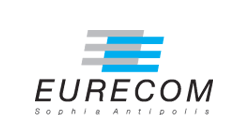Traditional base station siting (BSS) methods rely heavily on drive testing and user feedback, which are laborious and require extensive expertise in communication, networking, and optimization. As large language models (LLMs) and their associated technologies advance, particularly in the realms of prompt engineering and agent engineering, network optimization will witness a revolutionary approach. This approach entails the strategic use of well-crafted prompts to infuse human experience and knowledge into these sophisticated LLMs, and the deployment of autonomous agents as a communication bridge to seamlessly connect the machine language based LLMs with human users using natural language. Furthermore, our proposed framework incorporates retrieval-augmented generation (RAG) to enhance the system’s ability to acquire domain-specific knowledge and generate solutions, thereby enabling the customization and optimization of the BSS process. This integration represents the future paradigm of artificial intelligence (AI) as a service and AI for more ease. This research first develops a novel LLM-empowered BSS optimization framework, and heuristically proposes three different potential implementations: the strategies based on Prompt-optimized LLM (PoL), LLM-empowered autonomous BSS agent (LaBa), and Cooperative multiple LLM-based autonomous BSS agents (CLaBa). Through evaluation on real-world data, the experiments demonstrate that prompt-assisted LLMs and LLM-based agents can generate more efficient and reliable network deployments, noticeably enhancing the efficiency of BSS optimization and reducing trivial manual participation.
Large language model as a catalyst: A paradigm shift in base station siting optimization
IEEE Transactions on Cognitive Communications and Networking, 6 March 2025
Type:
Journal
Date:
2025-03-06
Department:
Communication systems
Eurecom Ref:
8132
Copyright:
© 2025 IEEE. Personal use of this material is permitted. However, permission to reprint/republish this material for advertising or promotional purposes or for creating new collective works for resale or redistribution to servers or lists, or to reuse any copyrighted component of this work in other works must be obtained from the IEEE.
See also:
PERMALINK : https://www.eurecom.fr/publication/8132



